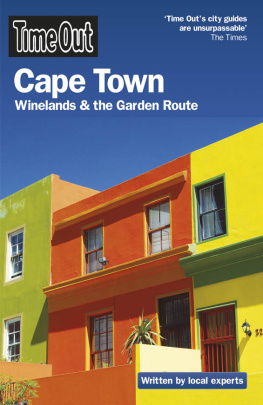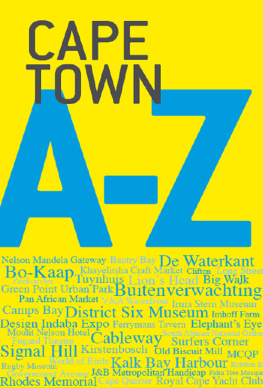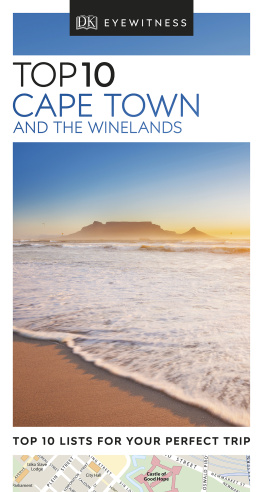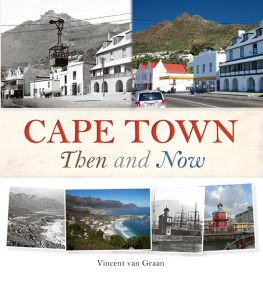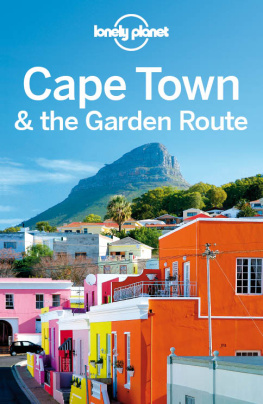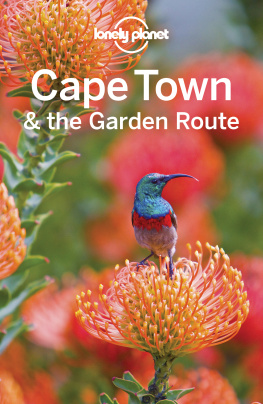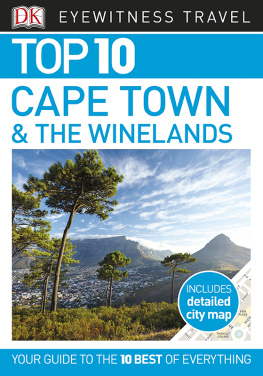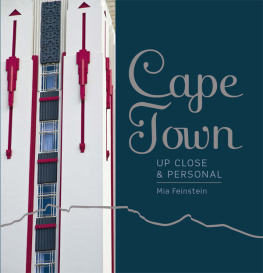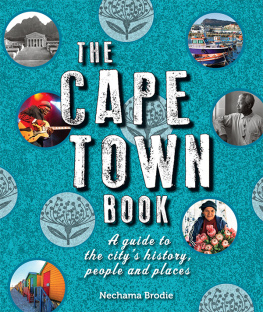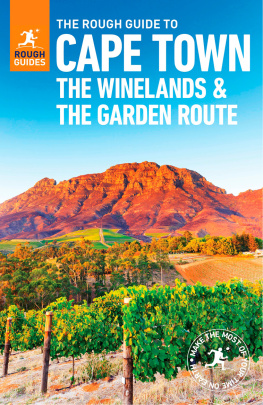Title Page
TEN TRAVELLERS TALES
Travel stories from British Columbia, Cape Town, and the Baltic Countries
By
Julian Worker
Publisher Information
Ten Travellers Tales published in 2012
by Andrews UK Limited
www.andrewsuk.com
This book is sold subject to the condition that it shall not, by way of trade or otherwise, be lent, resold, hired out or otherwise circulated without the publishers prior written consent in any form of binding or cover other than that in which it is published, and without a similar condition being imposed on the subsequent purchaser.
Copyright Julian Worker 2012
The right of Julian Worker to be identified as author of this book has been asserted in accordance with section 77 and 78 of the Copyrights Designs and Patents Act 1988.
Cape Town - The Bo Kaap
No matter how many times I gazed at Table Mountain, rested on the Atlantic beaches, or savoured the food at one of the many restaurants at the Victoria and Alfred Waterfront, I could never really escape the history of Cape Town. Robben Island, the Slave Lodge on Wale Street, and the Bo Kaap district all lead you back to a dark past, a past that adds a certain zest to any visit here. Theres a reason for everything here and this intriguing past makes Cape Town a must-visit city.
Book well in advance for your trip to Robben Island especially in the summer holidays when there can be a wait of two weeks before theres a free spot. Try and get to the Nelson Mandela Gateway at the Victoria and Alfred Waterfront early to board the boat as the best seats are on the top deck with the views of Table Mountain especially eye-catching.
Once on the island everyone has to get on a bus and be escorted around the island before visiting the prison. The most poignant place is the house of Robert Sobukwe the founder of the Pan Africanist Congress. Sobukwe was in solitary confinement and wasnt allowed to speak to anyone - however he did give secret hand signals to other prisoners when he was outside - he held dirt in his hand and let it trickle through his fingers as a gesture of solidarity. His little yellow house is by the guard-dog kennels. Visitors also see the quarry where the prisoners worked.
Ex-prisoners or ex-wardens conduct the prison tours - they show you Nelson Mandelas cell, the exercise yard, and the dormitory style accommodation with the daily prison diet written on a board for all to see.
Back in Cape Town, the most poignant symbol of the apartheid regime is the District 6 museum. District 6 was a vibrant community of Cape Malays, Indians, Blacks, and a few Whites until 11 th February 1966, when the apartheid regime declared District Six a whites-only area under the Group Areas Act. By 1982 60,000 people had been relocated to the Cape Flats Township around 15 miles away. Only the churches and mosques remained standing.
A pair of pictures of one street before and after the demolition of the area made me so sad as the destruction is absolute. Theres a tower of street names from the district which were given to the museum by the person whose job it was to collect the signs and throw them into the sea. District 6 was to be erased from the memory. A whites only bench leaves you in no doubt as to who is allowed to sit on it. On the floor is a map of District 6. People have written the names of the families who lived at certain addresses and what businesses occupied which premises.
The Slave Lodge in Cape Town is an unprepossessing building on Wale Street close to the Cathedral, the Company Gardens, and the Houses of Parliament. Dont be fooled by its lightly coloured exterior as the exhibitions inside reveal dark secrets.
The Slave Lodge was built in 1679, making it the second oldest colonial building in South Africa and was owned by the Dutch East India Company, who maintained a settlement at the Cape and needed the slaves to support its profitable Asian trading operations. It continued to be used until 1834 when slavery was abolished and during these 155 years approximately 9,000 slaves would have lived here..
Slaves were brought to The Cape from most of the countries bordering the Indian Ocean though the four main areas were Indonesia, the Indian sub-continent, Madagascar and Mozambique. The cramped conditions of their passage are outlined in diagrams. Individual slaves are honoured in a column of names.
The Slave Lodge is a place that everyone should visit - in Western minds slavery is associated with the transport of humans across the Atlantic from Africa to North America. This museum will show that a similar trade went on at the same time in the Indian Ocean.
Head along Wale Street away from the city centre and in five minutes you will enter the Bo Kaap district, located on the slopes of Signal Hill, with Table Mountain looming nearby.
The residents of this inner city area with its brightly painted houses invariably being picked out by the sun are descended from some of the slaves that were imported by the Dutch in the 16 th and 17 th Century. For a reason that nobody is sure of, these people are today known as Cape Malays even though less than 1% of residents have descendants from Malaysia.
The best way to experience the Bo Kaap is to walk around with a local guide, someone who knows the area and the people really well. This way the visitor receives a fleeting glimpse of the local day-to-day happenings in the Bo Kaap. Theres the student from Saudi Arabia who is learning English in Cape Town, but who doesnt trust South African dentists to treat the abscess on his tooth. The shopkeeper in the Indian delicatessen no longer wants a South African soccer jersey and the children all know in which pocket the guide keeps her treats.
Tours start at the Bo Kaap museum, a Cape Dutch style house with an attached community centre showing many exhibits on the benefits of Islam. In the museum, the first room is dedicated to the singing/dancing troupes that contest the many competitions that take place on the Tweede Nuwe Jaar, or second New Year holiday, on January 2 nd . This is a holiday that dates back to the time of slavery - their owners had New Years celebrations, which required the slaves to cook, serve food, and attend to the guests needs. These owners allowed the slaves to have the following day off instead by way of thanks - if this sounds generous bear in mind this was their only holiday of the year.
Nowadays, this holiday features Cape Minstrels from the coloured community dancing through the city centre. They dance in troupes who all wear outfits made from same colours, which are agreed upon by the various leaders, or captains, of the troupes. These colours are kept from the other members until a week before the festival. If people dont like the chosen colours its too late for them to change to another troupe with nicer colours as the dances take weeks of rehearsals to prepare.
At the museum another room contains a genuine flag from the Confederate ship Alabama, which occasionally operated in the waters off Cape Town during the American Civil War. Its speculated that the captain of the Alabama gave a flag from his ship to the Cape authorities as thank you for repairing his ship after a skirmish with a Union vessel.
From the Museum, the tour goes to see the Auwal, the first mosque in the southern hemisphere when it was opened in 1797. Now there are 10 mosques in the Bo Kaap. Property prices have rocketed in recent years with some small houses fetching in excess of 1 million Rand. Other houses in the area are solely for the employees of the electricity company, which means that if an employee loses their job they also lose their house. There is a waiting list.
The next place visited is the delicatessen with many Malay treats such as samosas and koeksisters, a deep-fried doughnut that has been dipped in honey. A discussion ensues about soccer shirts an indication that the 2010 FIFA World Cup will have a legacy in more ways than one.
Next page

